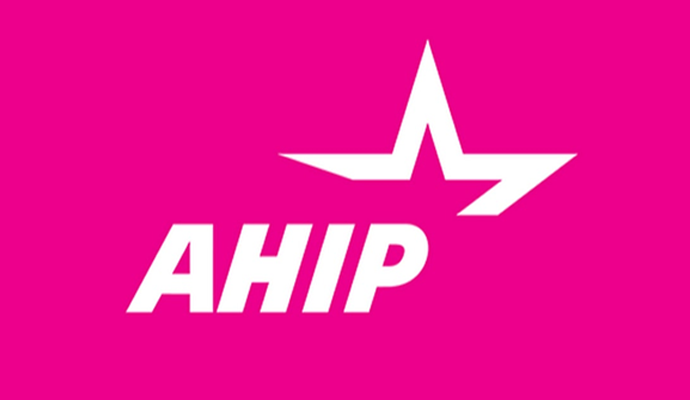Electronic Prior Authorizations Impact Quality, Provider Burden
In order to soothe the controversies around prior authorizations, payers and providers may turn to electronic prior authorizations for faster care delivery and lower burden for providers.

Source: AHIP Logo
- Electronic prior authorizations may improve quality of care by increasing the speed of care delivery, decreasing provider burden, and boosting patient experience, according to a study conducted on behalf of America’s Health Insurance Plans (AHIP).
The industry-wide conversation around prior authorizations is complicated and contentious. They are considered useful for preventing adverse health events but also burdensome for providers. As a result, major provider organizations have called on payers to rectify the failures of the prior authorization system.
In the FAST Path Initiative, however, providers and payers have ostensibly aligned to promote electronic prior authorization as superior to manual prior authorization methods.
The FAST Path Initiative started in 2020, the study explained. AHIP initiated a request for proposal and chose two vendors that presented standards-based, integrated, scalable electronic prior authorization solutions. The selected vendors--Availity and Surescripts--then worked with separate subsets of health plans to implement their solutions.
RTI International evaluated the results as a third party. Point-of-Care Partners acted as an advisor.
READ MORE: Pros and Cons of Prior Authorization for Value-Based Contracting
The study observed two groups of research questions—one having to do with provider burden and the other with patient experience.
To assess electronic prior authorization’s effects on provider burden, the researchers observed the volume of electronic prior authorization transactions, the volume of and time spent on communications related to electronic prior authorization—specifically through phone calls and faxes—, and the change in resources available related to electronic prior authorization.
To analyze patient experience with electronic prior authorization, researchers observed the amount of time between prior authorization submission and the decision, the change in perceived timeliness, and the reported frequency of altering prescriptions for cost-effective reasons.
“The review of over 40,000 transactions showed the impact electronic prior authorization makes in health care,” said Denise H. Clayton, research economist of Health Economics and Evaluation at RTI International.
“Because clinicians and their staff report more benefits from ePA when they use it more often, greater provider adoption of ePA could help further realize its promise.”
READ MORE: AMA: Payers Did Not Fix Prior Authorization, Cut Provider Burden
The researchers observed trends before and after implementation as well as trends among providers who used electronic prior authorization heavily as compared to the rest of the population of providers.
The study found that 62 percent of prior authorizations were electronic after the solutions were implemented. Manual prior authorizations were nearly halved. The total number of prior authorizations jumped by 34 percent.
Before implementation, 24 percent of prior authorization decisions took 48 hours or more and 17 percent took zero to two hours. After implementation, 15 percent of prior authorizations took 48 hours or more and 33 percent—the highest percentage in any category whether pre- or post-implementation—took zero to two hours.
Electronic prior authorizations had little effect on the rate of approvals.
In response to survey questions, providers who used electronic prior authorization voiced more positive comments.
READ MORE: CMS Rule Targets Prior Authorization with Interoperability
Six in ten providers who used the prior authorization regularly said that electronic prior authorization made it easier to know whether they needed to request prior authorization.
Nearly the same number of providers who were well-experienced in prior authorizations (57 percent) said that the electronic prior authorization requirements were easier to understand. Over half of them added that the prior authorization decision was easier to view.
Taken with less experienced providers, however, the results were slightly less extreme. For example, less than half (47 percent) said that it was easier to understand if prior authorization was required with electronic prior authorization while 43 percent said that the easiness was the same.
Among providers who used electronic prior authorization for most of their patients, 54 percent had fewer phone calls and 58 percent had fewer faxes related to prior authorization. Furthermore, 63 percent spent less time on the phone and around the same amount spent less time on faxes related to prior authorizations.
However, when observing reported trends among the entire provider population, nearly half or more than half stated that there was no change in the volume or time spent on phone calls and faxes when using electronic prior authorizations.
Finally, over seven in ten respondents who used electronic prior authorization reported that the tool sped up the time it took them to deliver care to the patient, while less than three in ten said that the amount of time for care delivery was unchanged (27 percent).
For the provider population as a whole, 43 percent agreed that electronic prior authorization increased the speed of care delivery and nearly half said that the speed stayed the same (49 percent).
“Prior authorization is an important tool in helping patients receive safe, effective, clinically appropriate care,” said Kate Berry, senior vice president of clinical affairs at AHIP.
“We are always looking for ways to enhance the patient and provider experience, and electronic prior authorization is an example.”
